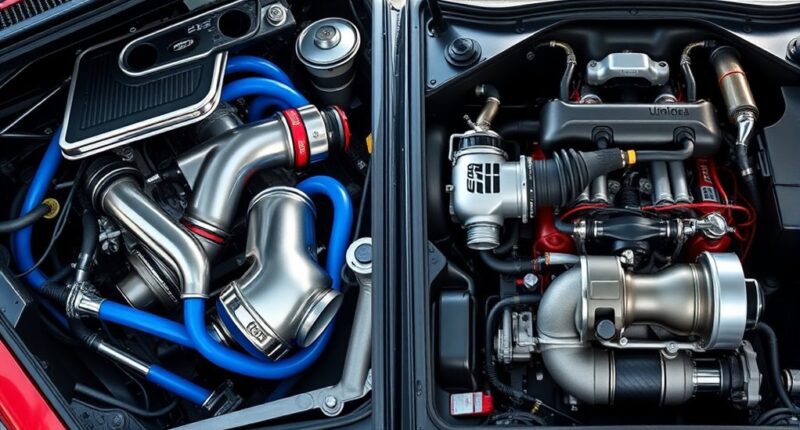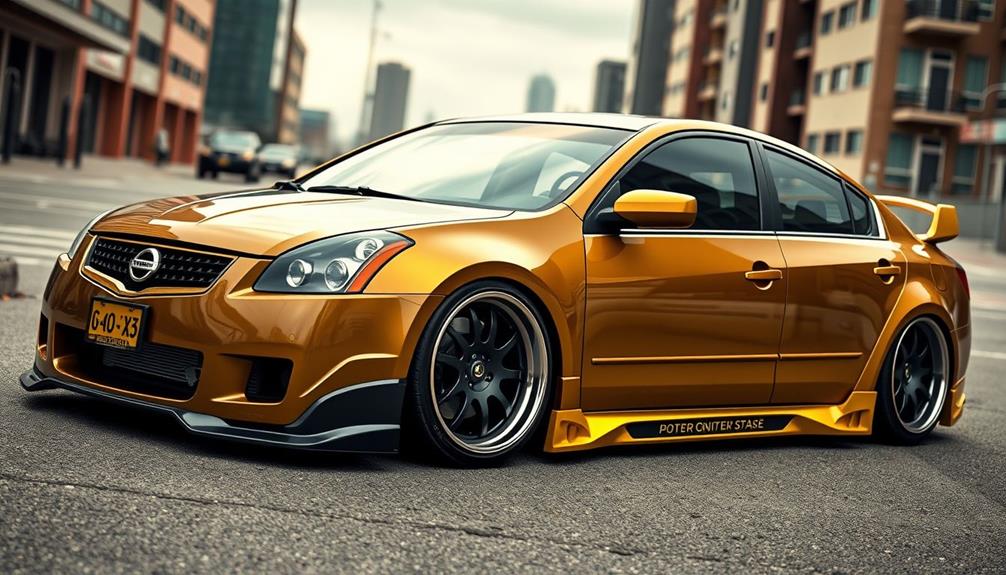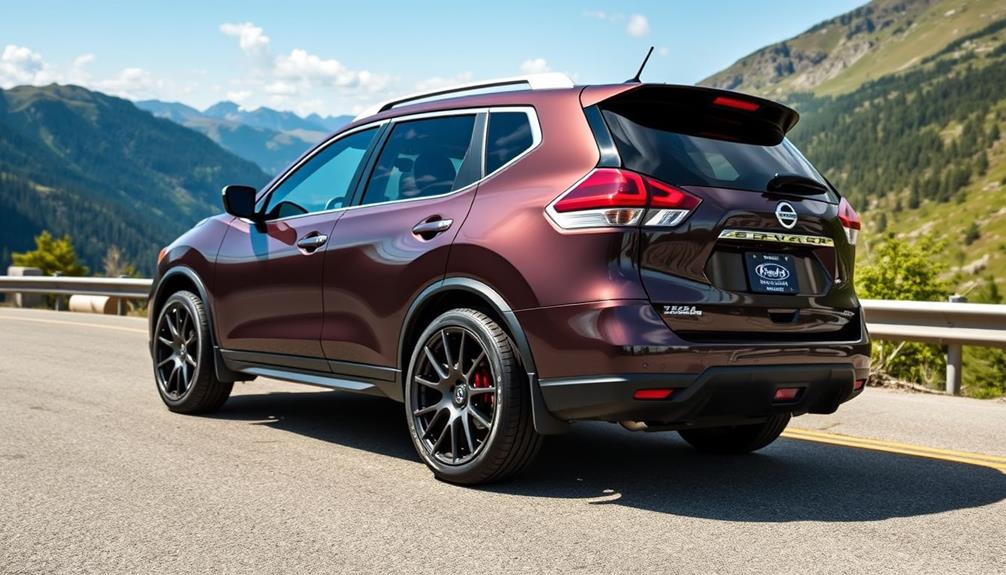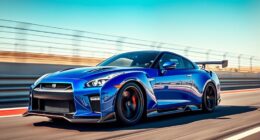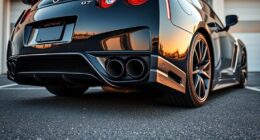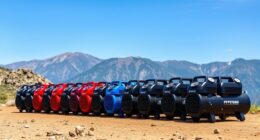If you’re weighing a turbo build, the SR20DET generally offers better performance potential, easier tuning, and more affordable aftermarket parts, making it ideal for high-horsepower projects. The KA24DE can be reliable and budget-friendly but requires more internal upgrades and careful tuning for high power. Your choice depends on whether you want maximum performance or a cost-effective setup—keep exploring to discover which option suits your goals best.
Key Takeaways
- SR20DET supports higher power potential, easier tuning, and broader aftermarket parts for aggressive builds and high horsepower goals.
- KA24DE offers a more budget-friendly platform but requires internal upgrades and careful tuning for reliable high-boost performance.
- SR20DET has greater aftermarket support, making parts and tuning more accessible and cost-effective for performance enhancements.
- KA24DE’s stock internals are weaker, necessitating modifications for high-boost applications, increasing build complexity and cost.
- Overall, SR20DET is ideal for enthusiasts aiming for maximum power, while KA24DE suits budget-conscious, moderate-performance projects.

When choosing between building a turbocharged SR20DET or KA24DE for your Nissan, understanding their strengths and differences is essential. Both engines have their unique appeal, especially when it comes to performance upgrades and tuning considerations. The SR20DET is renowned for its robust power potential and aftermarket support, making it a popular choice among enthusiasts seeking high performance. Its design allows for significant upgrades, from larger turbos to forged internals, which can push power levels well beyond stock figures. Tuning the SR20DET is also relatively straightforward due to its widespread use and the abundance of tuning guides, making it easier to access its full potential. On the other hand, the KA24DE, while less popular in turbo builds, offers a more affordable platform with a reliable stock setup. When turbocharged, it can deliver impressive gains, but it often requires more custom tuning considerations to optimize airflow, fuel delivery, and boost levels. Its weaker stock internals mean you might need to upgrade pistons or rods sooner if aiming for high horsepower targets, which adds to the overall cost and complexity. Additionally, the availability of performance parts for the SR20DET makes it easier to build a high-horsepower engine compared to the KA24DE. Performance upgrades for the SR20DET generally revolve around increasing airflow and boosting power, with common modifications including larger turbochargers, intercoolers, and fuel system upgrades. Its architecture supports high-boost setups, which makes tuning more predictable and consistent for maximum output. The tuning considerations revolve around managing boost pressure, fueling, and timing to avoid detonation and guarantee reliability. With the right setup, the SR20DET can produce well over 300 horsepower comfortably, making it a favorite among drag racers and drift enthusiasts alike. Conversely, turbocharging the KA24DE involves a more cautious approach, mainly because of its stock internals. While it can be made to produce comparable power, you’ll need to consider internal upgrades and meticulous tuning to prevent engine damage. Its larger displacement and different compression ratio mean tuning considerations must be tailored carefully to balance power with engine longevity. Ultimately, your choice depends on your goals and budget. If you want a proven platform for high-horsepower builds with plenty of support, the SR20DET is usually the better option. If you prefer a more budget-friendly route that still offers decent performance with some upgrades and tuning, the KA24DE can be a worthwhile choice. Both engines have their merits, but understanding their performance upgrades and tuning considerations helps you make an informed decision that matches your driving style and project ambitions.
Frequently Asked Questions
Which Engine Offers Better Reliability for Daily Driving?
When choosing a daily driver, you need to take into account engine longevity and reliability. The KA24DE generally offers better reliability because it’s simpler and has fewer high-stress components, making it a more durable choice for everyday use. The SR20DET, while powerful, tends to require more maintenance and can have more issues over time. So, if longevity is your priority, the KA24DE is likely the better option for consistent daily driving.
How Easy Is It to Find Aftermarket Parts for Each Build?
Imagine you’re exploring a well-stocked market—finding what you need becomes smoother. When it comes to aftermarket support and part availability, the SR20DET generally has a slight edge, thanks to its popularity among enthusiasts. You’ll find more options, easier access to upgrades, and a broader range of parts. The KA24DE, while still supported, may require a bit more hunting, but both engines can meet your needs with some persistence.
What Are the Best Tuning Options for Each Engine?
You should focus on ECU tuning and fuel management to optimize each engine’s performance. For the SR20DET, upgrade the ECU for better boost control and fuel mapping, releasing more power. With the KA24DE, consider a standalone ECU or piggyback system to fine-tune fuel delivery and ignition timing. Both engines benefit from precise tuning, ensuring reliability and maximizing horsepower while maintaining efficient fuel management.
How Do These Builds Affect Long-Term Engine Maintenance?
Did you know that turbocharged engines typically require 30% more maintenance? When you build these engines, you’ll notice increased maintenance complexity, especially with oil longevity. The turbo components demand more frequent oil changes and careful monitoring to prevent wear. Proper tuning and regular check-ups become essential, but neglecting these can lead to costly repairs down the line. So, plan for more diligent maintenance to keep your engine running smoothly long-term.
Which Setup Provides More Consistent Performance on the Track?
You’ll find that the SR20DET generally offers more consistent performance on the track due to its robust design and reliable tuning potential. Its engine consistency helps maintain power delivery over multiple laps, giving you better track performance. The KA24DE turbo build, while powerful, may experience more fluctuations as components heat up or wear, making it slightly less predictable for sustained, consistent track performance.
Conclusion
Whether you choose the spirited SR20DET or the keen KA24DE turbo build, remember each offers unique upsides and undeniable drawbacks. Your decision depends on desire, budget, and dedication. Dive deep, do your homework, and don’t discard details. Ultimately, your upgrade journey is a personal pursuit—so pick the path that fuels your passion and powers your performance. Pursue precision, passion, and performance—because your build should be as bold as your ambition.
